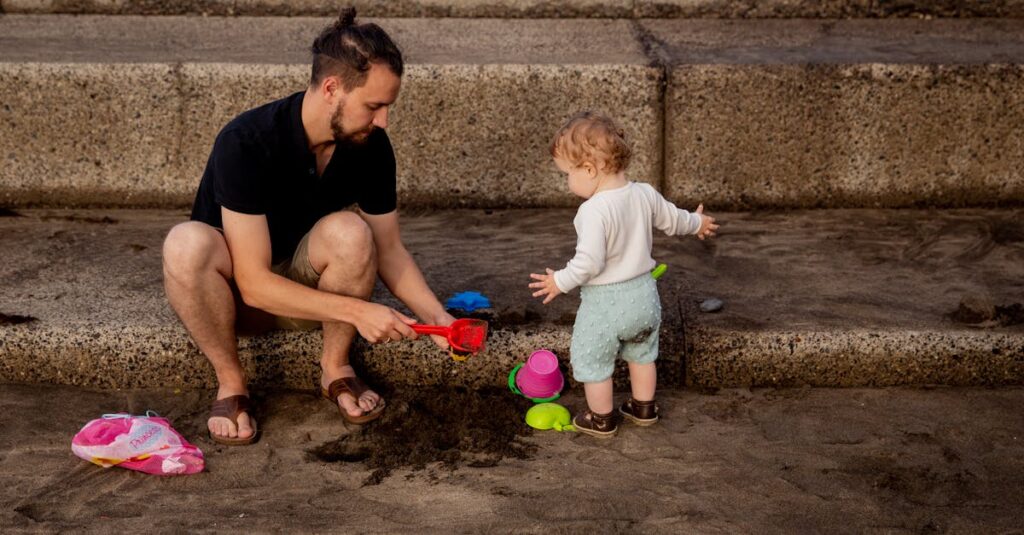The Sensational Benefits of Sensory Play
Sensory play isn’t just fun and games; it’s a vital part of childhood development. When little hands dive into textures, colors, and sounds, they’re not just exploring the world; they’re laying down neural pathways. And who better to guide this adventure than parents? Engagement in these activities boosts cognitive growth, fine motor skills, and problem-solving abilities. Plus, it’s a golden opportunity to strengthen emotional bonds.
By actively participating in sensory play, children are engaging their senses, which enhances their learning experience and overall development. This hands-on approach fosters creativity and imagination, leading to well-rounded skills.
Parental Presence: More Than Just Supervision
Being there matters. It’s a fundamental truth in the realm of parenting and sensory play. When parents actively participate, not just watch from the sidelines, they become safe bases from which children explore. This presence boosts confidence and nurtures a sense of security and trust. Beyond safety, this interaction fosters deeper communication and understanding, both verbally and non-verbally.
Crafting Memories: Sensory Play Ideas for Every Age
From squishing soft dough to splashing in water beads, sensory play can be tailored to every age and stage of development. It doesn’t require fancy gadgets; often, household items transform into treasures. Share stories, laugh over the unexpected messes, and marvel together at simple wonders. These shared experiences become cherished memories, reinforcing the joy of learning together.
Let’s explore some sensory play ideas that can engage individuals of all ages:
For Toddlers and Preschoolers:
- Finger Painting: Use non-toxic paints to let the little ones explore colors and textures.
- Sensory Bins: Fill bins with rice, pasta, or sand and hide treasures for them to discover.
For School-aged Children:
- DIY Playdough: Create homemade playdough with flour, salt, water, and food coloring.
- Bubble Wrap Stomp: Lay out bubble wrap and let them stomp around to enjoy the popping sensation.
For Teens and Adults:
- Scented Candles: Experiment with making scented candles using essential oils and wax.
- Slime Making: Engage in the popular trend of creating different types of slime.
Remember, sensory play is not limited by age. Engaging in such activities fosters creativity, reduces stress, and promotes bonding among participants. So, gather your loved ones and immerse yourselves in the joy of sensory play!
Navigating Emotional Highs and Lows Together
Sensory play isn’t always sunshine and laughter. Frustrations can bubble up when a tower falls or shapes don’t fit. But, it’s in these moments that emotional learning and resilience are built. Parents can guide their children through these feelings, showing them how to express and manage emotions constructively. It’s about teaching by doing, being there to hug, wipe tears, and encourage another try.
When children experience emotional highs and lows during play, it’s an opportunity for parents to connect and support them. By acknowledging their feelings and providing reassurance, parents can help children develop important emotional skills.
Encouraging Interaction Without Overstepping
Finding the balance between guiding and letting children lead can be tricky. It’s like being the guardrails in a bowling alley, ensuring they don’t veer too far off course but allowing for the adventure of the game. Interventions should inspire further exploration, not dictate it. Questions like ‘What happens if you try this?’ can open doors to imagination without pushing through them.
Reflections and Encouragements: Building a Sensory Play Community
After the playdough has dried and the glitter has settled, take a moment to reflect on the day’s adventures. Encourage your child to talk about what they did and how they felt. Sharing these stories with friends, family, or a wider community can magnify the joy and learning.
Perhaps start a blog, a social media group, or join existing forums to connect with other sensorial explorers. It’s about celebrating the journey and inspiring others.

